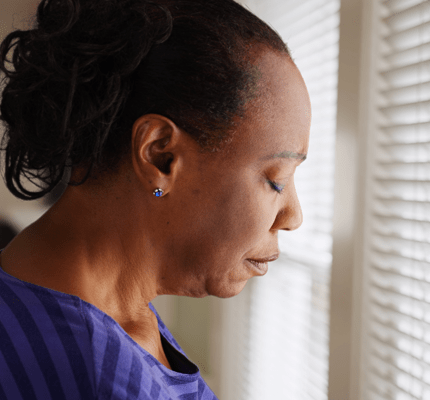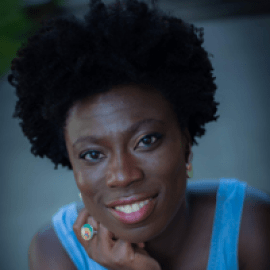
How Performances Can Address Trauma and Systemic Racism
Black Lives Matter protests have called renewed attention to the Black people who have been killed by police in recent years. In a new article in Text and Performance Quarterly, Nikki Owusu Yeboah discusses The (M)others, a verbatim theatre performance that calls attention to systemic racism and police violence. Verbatim theatre is a non-fiction genre that is adapted from the real-life experiences of research participants. Yeboah adapted The (M)others from interviews with four women who had lost loved ones to police violence and whose stories had received little attention from the media. Through verbatim theatre, Yeboah centers the experience of these women and their underrepresented perspectives.
This performance occurs within the context of “trauma porn culture,” in which people readily consume media about traumatic events, such as videos of Michael Brown’s, Eric Garner’s, and Laquan McDonald’s deaths at the hands of police. Many people watch these videos on Facebook or other social media platforms and then move on to other victims. However, Yeboah argues that this “ability to capture the public’s attention (and by this I mean the capacity of the victim to be seen and heard) is only the beginning of the battle for justice” (emphasis original).
Yeboah argues that verbatim theatre can respond to the need to disrupt the consumption of traumatic narratives within trauma porn culture and prompt the audience to respond to injustice. Cultural narratives about police violence often focus on individual narratives. For example, some people will excuse racialized violence as the result of “bad apples,” even though problems within police organizations themselves are often pervasive. In contrast, the performance places the experiences of victims and perpetrators within the context of the system in which the traumatic episode occurs.
Yeboah collected interviews with participants for the performance at San José State University. Prior to the deaths of their loved ones, none of the participants had been activists. They became activists after connecting with others who had experienced similar traumatic experiences, demonstrating that their individual experiences were part of a larger, systemic problem.
When developing the performance, Yeboah identified common threads among the women’s experiences. By identifying these patterns, Yeboah could highlight them for the audience. For example, the mothers described similar experiences after finding out about their loved one’s passing. Three of them were interrogated by police about their loved one’s mental health, substance use, and other issues that officers would later use to justify the killings. In the excerpt below, the women recount some of the questions:
SHARON
They split us up
We were all three in three different rooms
and they questioned us
and I found out later that they recorded us.
The police officer ask me some questions about Phil
you know …
LAURIE
Was he on drugs?
KIMBERLY
Was he depressed?
SHARON
I was like
“I …
I don’t know …
When are you going to let me see him?”
The performance breaks the “fourth wall,” meaning that the performers interact with the audience. Yeboah argues that this is necessary to help the audience develop empathy for both the mothers’ perspectives and the injustice of their experiences. By understanding the mothers’ experiences, the audience may be more motivated to respond to injustice and push for changes to the system. To accomplish this, the mothers invite the audience to participate in the performance. Here is one example of such an invitation:
SHARON
(to audience)
Are there any mothers here tonight?
If you could summarize in one
or two words
what being a mother is like for you
what word would you use?
The performance also invites the audience to participate through dance. The performers and audience members dance together to the “Cha Cha Slide.” Dancing brings them together as a community and is a testament to the lives of the loved ones who have been lost.
The performance also engages the audience with the systemic nature of police violence and its disproportionate impact on communities of color:
LAURIE
A study found that Black boys,
As young as age ten
are more likely to be regarded as suspicious.
DIONNE
Older than they look.
LAURIE
Presumed guilty of crimes.
DIONNE
And face police violence if accused of a crime
The performers confront the audience directly with the ways that Black children are denied innocence and ask them to reflect on their own biases. Yeboah argues that “This self-scrutiny is what the bridge to the other looks like. We need to do more than empathize with the stories on stage and shake our heads at a broken system, stepping up to take responsibility for our role in creating, maintaining, and expanding the conditions for such incidents to occur in our communities.”
The performance denies the audience catharsis through a “Hollywood ending.” Instead, the play ends with the death of Dionne’s child, James:
DIONNE
So that night before he died
He didn’t know I had the money for his party.
I was gonna give him an ice cream cake
invite all his cousins.
He never made it.
He died a day before his birthday
Together, the performers and the audience sing a birthday song that James never got a chance to hear. Through this emotional ending, the audience may be prompted to question the system that led to James’ death. Yeboah’s goal is to elicit an empathetic, emotional response that will lead to change.
By representing trauma through verbatim theatre, Yeboah hopes to craft narratives of trauma that are less consumable than the videos of police violence that circulate on social media. Yeboah contends that this method offers guidance to “oral historians doing the work of staging the traumatic narratives of historically marginalized communities in the age of trauma culture.”


